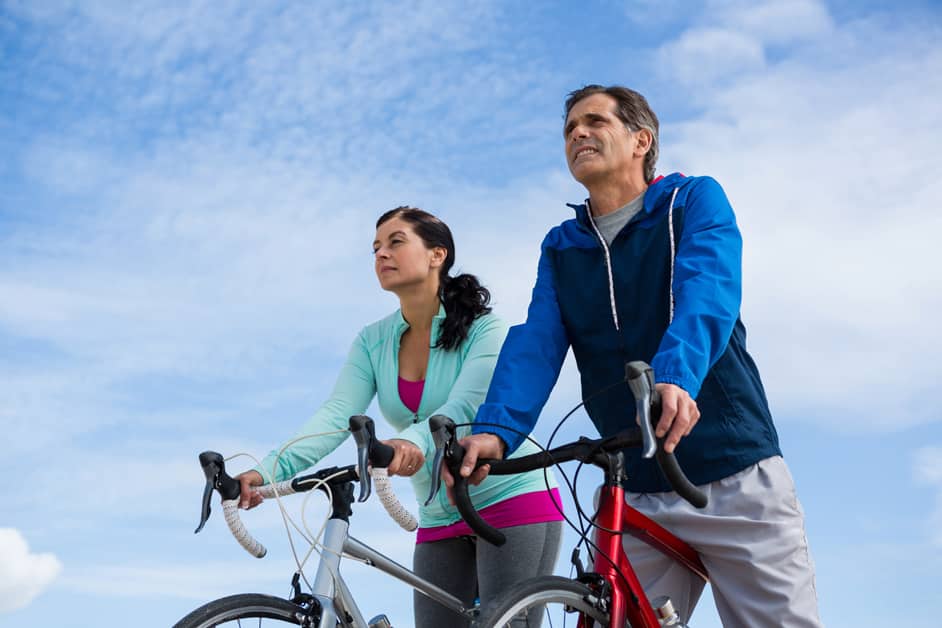Introduction
If you’re looking for relief from knee pain, low-impact activities are the way to go. They can help improve joint health and reduce inflammation. Walking and swimming are great examples of low-impact exercises that put minimal stress on the joint. You can even do them at home! To get started, here are five low-impact cardio exercises you can do at home to reduce knee pain:
- Walking
- Swimming
- Cycling
- Elliptical Training
- Yoga
Benefits of Low-Impact Cardio Exercises
Low-impact cardio activities, like walking, swimming, and biking, can help you get fit with minimal strain on your joints. Studies show these exercises can reduce joint pain and stiffness, improve range of motion, promote circulation, and reduce inflammation. Even if you’re hurt or healing from an injury, low-impact exercises that target your lower body can be beneficial and protect your knees.
No jumping or running means low-impact cardio puts little stress on your knees compared to high-impact activities like jogging or aerobics. Plus, extended gentle movements can actually strengthen muscles in the area for added support for weakened joints. Exercise has been proven to reduce knee pain by enhancing balance and flexibility and strengthening the leg muscles, reducing risk of injury.
You don’t need a gym membership or special equipment to do low-impact cardio. Examples include:
- Walking (general or uphill)
- Swimming (breaststroke or doggy paddle)
- Cycling (sitting or standing)
- Elliptical machine training (low resistance)
If you can, mix multiple exercises into your routine for maximum benefits.
Low-Impact Cardio Exercises
Want to lessen knee pain without straining your joints? Low-impact cardio exercises are the way to go! There are loads of these moves you can do at home – no special equipment needed. Here’s a look at five of them and how to do ’em right:
Walking
Go for a walk! It’s a low-impact exercise that strengthens the lower-body. Wear supportive shoes for your knees. Warm up with a slow 5-min walk. Increase speed & distance each week. Start with 15-20 min, 3 times a week. Once you’re comfortable, increase walking times & speeds. You’ll get an effective total body workout with little impact on your knee joints.
Swimming
Swimming is a great low-impact, cardio exercise. It reduces inflammation and gives natural resistance. Research shows it can improve your heart health, help with weight loss, and reduce joint pain, especially for those with knee issues. It’s suitable for all ages and abilities. Physiotherapists often suggest swimming to rehab injuries, because it strengthens the knee without direct stress.
Long-term swimming helps make the muscles that support the knee more flexible. This gives more stability to the knee. Try swimming laps of a pool, alternating between crawl and breaststroke. Or, challenge yourself with deep-water running or aqua jogging.
Cycling
Cycling is a great low-impact activity for the whole body. It can reduce knee pain, especially for those with osteoarthritis. It can give the same benefits as aerobic exercise and help with knee muscles’ strength, range of motion and function.
Both upright and recumbent bikes are options for cycling. Upright bikes have more tension, which helps build muscles faster and is gentler on joints. To prevent slipping, use the proper seat height technique. Take breaks, if needed, to readjust the seat and avoid fatigue or discomfort in the knees. Start with lower levels of resistance and gradually build up. A warm-up is key to avoiding further strain to the knee joint while working out.
Elliptical Trainer
If you’re seeking a low-impact aerobic exercise that can reduce knee pain, an elliptical trainer is perfect. You don’t use your leg muscles as much on an elliptical, compared to running and jogging. The gliding motion of your arms and legs decreases joint pressure on the knees, hips and ankles.
There’s an added bonus to using an elliptical: it works both your upper and lower body at once. The handlebars let you exercise other parts of your body while using your legs. You can purchase or rent an elliptical from fitness stores. So, it’s a great option for home workouts too!
Rowing Machine
Rowing machines are great for low-impact cardio. They don’t put much stress on your joints. Plus, they work both your arms and legs.
If you have knee pain, rowing machines may be your ideal exercise. You’ll build leg strength and improve your coordination. You can also enjoy the comfort of being seated.
You don’t need a rowing machine to get in a good workout. You can do exercises like
- lunges and arm circles,
- squats and shoulder lifts.
These use similar muscle groups, and won’t require any special equipment. Perfect for those without access to a gym!
Tips for Reducing Knee Pain During Low-Impact Cardio Exercises
Wanna reduce knee pain? Low-impact cardio is the way to go! Any exercise that uses muscles around the knee can help it out. Here are some tips for doing low-impact cardio at home. So you can get on with reducing your knee pain.
Warm-up and cool-down
To protect knees from pain, it is essential to warm-up and cool-down prior to each low-impact cardio session. Doing this will expand the knee joint’s range of motion and decrease spinal pressure.
Begin by stretching your major muscles. Then do dynamic stretching exercises, like side squats, leg swings, chair squats, and hip bridges. Maintain each exercise for 30 seconds, then stretch once again. When your cardio is done, use foam rolling or tennis ball rolling for no less than 5 minutes to relax any stress in your legs or spine. Warming-up and cooling-down correctly reduces injury risks and boosts your exercise performance.
Wear supportive shoes
Exercise needs the right shoes to give quick and effective feedback on body movements. This is especially true for low-impact activities like light cardio. When your knees hurt, proper shoes are key.
Look for ones with extra cushioning in the heel and midsole. Firm pieces at the forefoot give support. Ample arch support reduces pressure points in the foot that could cause knee pain. Orthotics can help reduce stress on the plantar fascia, arch, metatarsal bones and shin.
If possible, see a sports medicine or physical therapy expert for orthotics tailored to your needs.
Increase intensity gradually
Pay attention to how your body feels during and after low-impact cardio exercises. This can help reduce knee pain. Increase the intensity of the workout gradually. Avoid any sudden changes in speed or intensity which can cause stress on the knee joint.
Start with light, low-impact activities like walking or cycling. Talk without getting breathless. As your body adjusts and muscles become stronger, increase intensity by adding hills or running intervals.
If you feel pain or discomfort in your knees during the activity, take a break. If knee pain persists after taking a break, stop and consult a doctor for advice. Swimming may be an alternative.
When done properly, low-impact cardio exercises can reduce knee pain, improve fitness and help avoid injury.
Stretch after exercise
Stretch after a low-impact cardio session! Flexible knee joints make it easier to move and reduce risk of injuries. Especially important for older adults who are less flexible.
Warm up your joints with gentle exercises like arm circles or marching in place. Cool down with static stretches like bending forward and gently pulling your foot up towards you. Other stretches include kneeling side lunges, wall squats, and inner thigh presses. To get the most benefit, hold each stretch for 30 seconds. Focus on deep breathing throughout the stretch period.
Take time to cool down and stretch after exercise sessions. This helps keep your knees healthy and improves range of motion for everyday activities!
Conclusion
To conclude, adding low-impact cardio exercises to your routine is a great method for lessening knee pain and improving overall fitness. Walking, elliptical machines, swimming/water aerobics, stationary/recumbent cycling, and step aerobics are the best exercises. If you’re doing these at home, you could use a treadmill, an elliptical machine, or a stationary bike.
Also, it’s important to use proper form and stretch or exercise before and after physical activity. That way, you can make sure you’re preventing and relieving joint pain.
Frequently Asked Questions
Q1: What are some low-impact cardio exercises I can do at home to reduce knee pain?
A1: Some great low-impact cardio exercises you can do at home to reduce knee pain include using an elliptical machine, using a stationary bike, swimming, using a rowing machine, and walking or jogging on a treadmill.
Q2: What are the benefits of low-impact cardio exercises for knee pain?
A2: Low-impact cardio exercises are beneficial for knee pain because they reduce the amount of stress placed on the joints, while still providing an effective cardio workout. This can help to reduce inflammation and improve mobility in the knee.
Q3: Are there any risks associated with low-impact cardio exercises for knee pain?
A3: As with any form of exercise, there is a risk of injury when doing low-impact cardio exercises for knee pain. It is important to ensure that you are using proper form and technique when doing the exercises, and to stop immediately if you feel any pain or discomfort.





